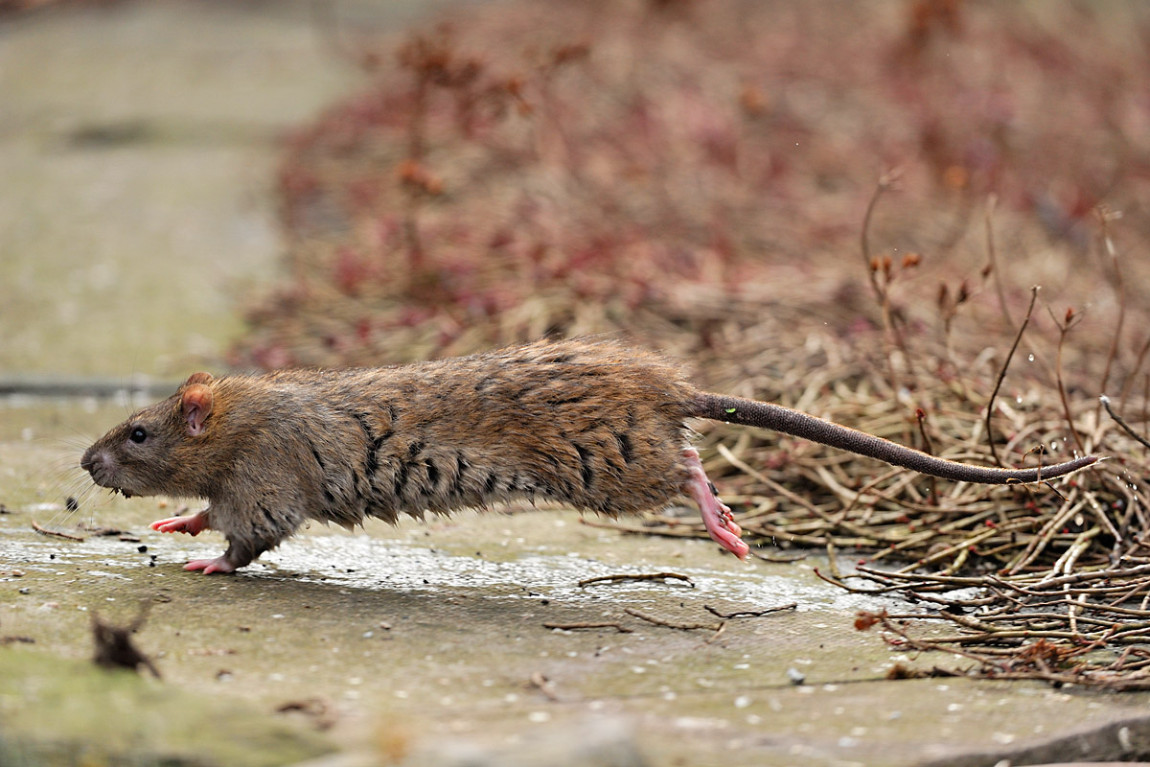Brown (or Common) rat

Status
Non-native, widespread and common
Population
7,070,000
Scientific name
Rattus norvegicus
Brown rats are thought to have been introduced into Britain in the 18th century, accidental stowaways in shipping from Russia. They are intelligent and highly adaptable animals, and have lodged alongside humans for millennia. Brown rats have grey-brown fur and a long, scaly tail, which is used to help balance. They live in large colonies made up of smaller social units or ‘clans’. High ranking males occupy the best positions, close to food sources. Brown rats tend to use the same routes to get from one place to another and in buildings the runs are apparent as dark smears. They are excellent swimmers and divers, and agile climbers, occasionally climbing trees. They dig extensive burrows that may be used for generations.
Head-body length: Up to 28cm
Tail length: A little shorter than head-body length
Weight: 200 – 400g
Lifespan: Up to 18 months
Reproduction
Litters of 6 – 11 pups are born and are weaned by three weeks. Young rats are grey and can be confused with mice. They breed throughout the year and females can have up to five litters in a year.
Diet
Cereals and root crops in agricultural land; meat, fish, bones, fruit and invertebrates in urban areas.
Habitat
Brown rats are typically associated with farms, rubbish tips, sewers, urban waterways and warehouses but they also live in hedgerows and cereal crops. They dig burrows in banks, leaving heaps of earth nearby.
Predators
Cats, foxes and owls predate young rats but adults have few natural predators.
Threats
Road traffic accidents; they are killed as a pest.
Conservation status
As an introduced species, a GB Red List assessment hasn’t been made. Global Red List: Least Concern (LC).
Population size and distribution
GB population: 7,070,000. Widely distributed throughout the UK but absent from most exposed mountain regions.
Did you know?
Rats spend a lot of their time washing and grooming: although they often live in rubbish tips and sewers (habitats created by humans), they are fastidiously clean.
